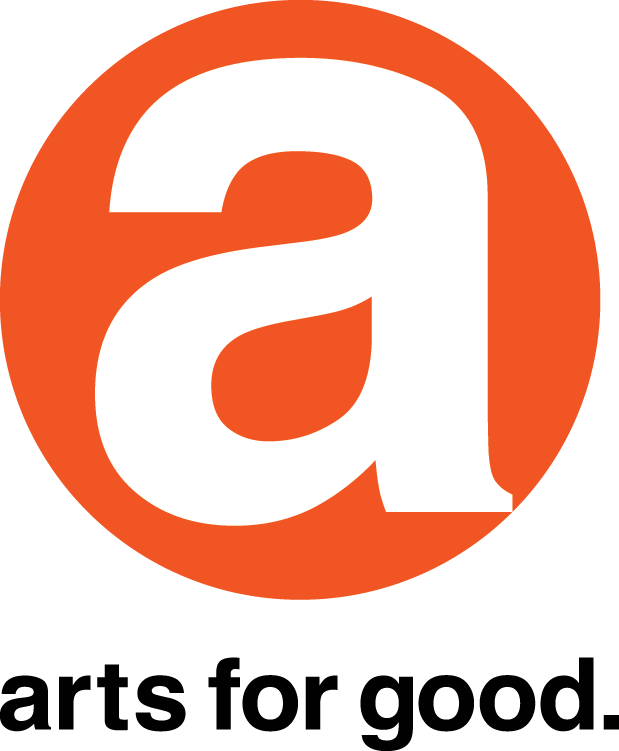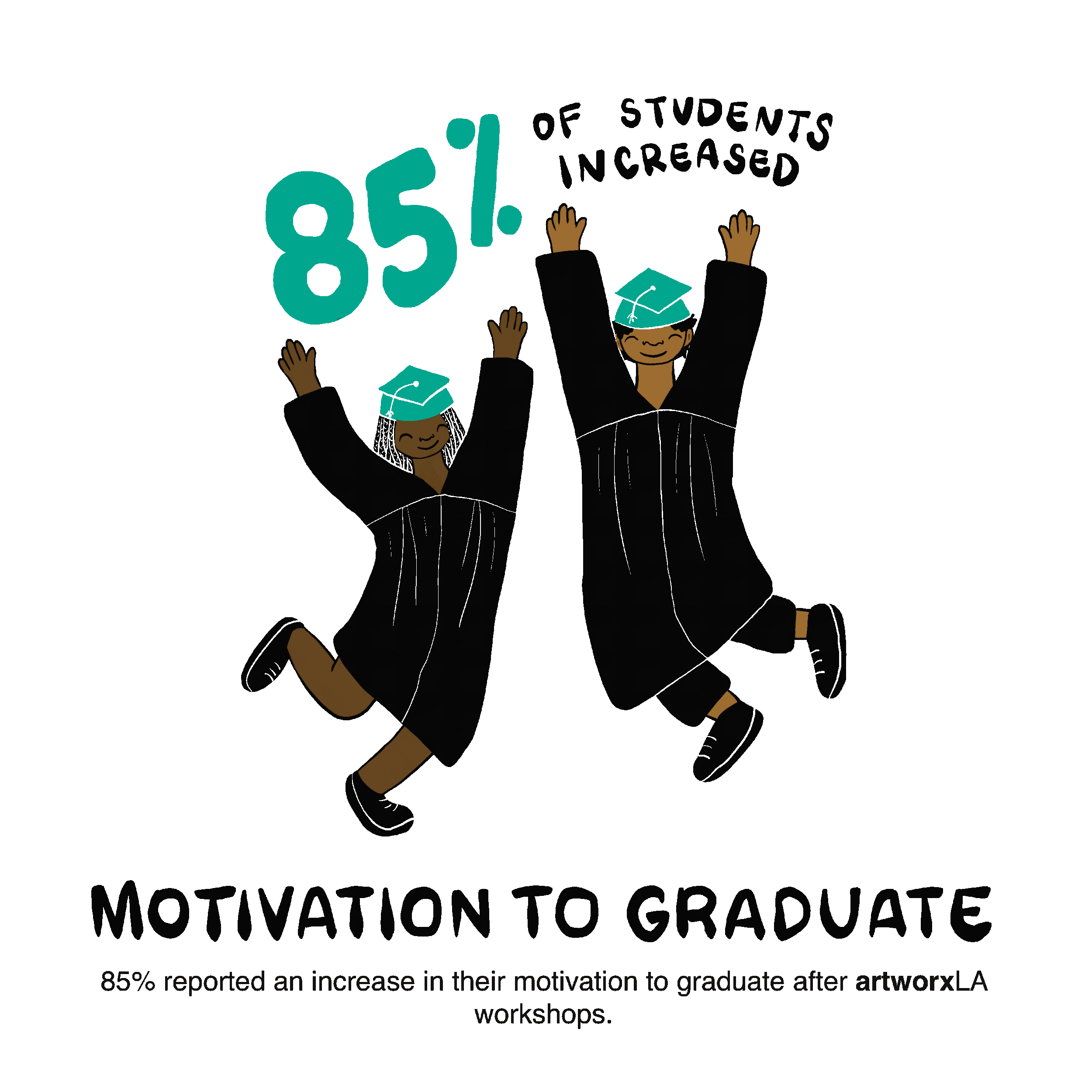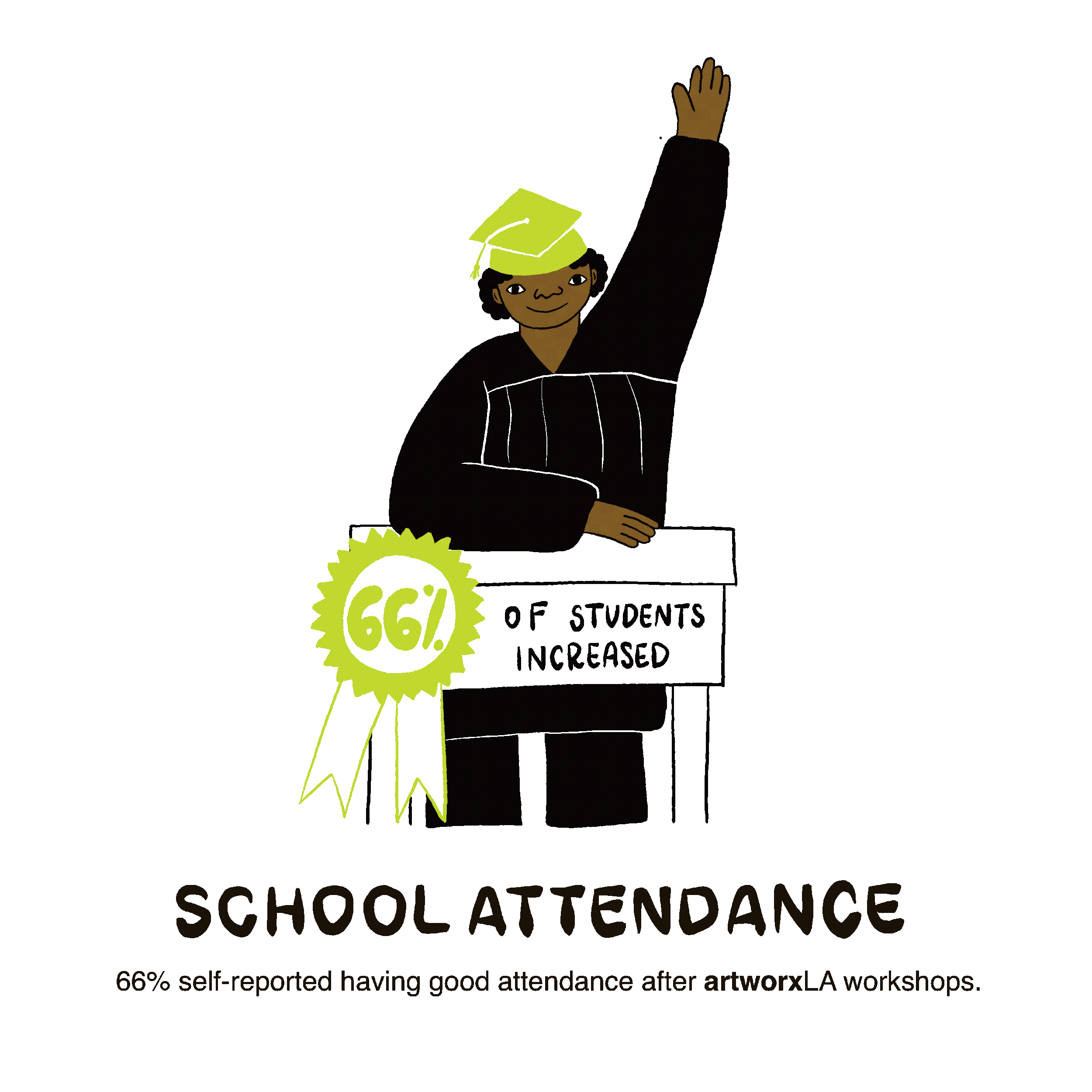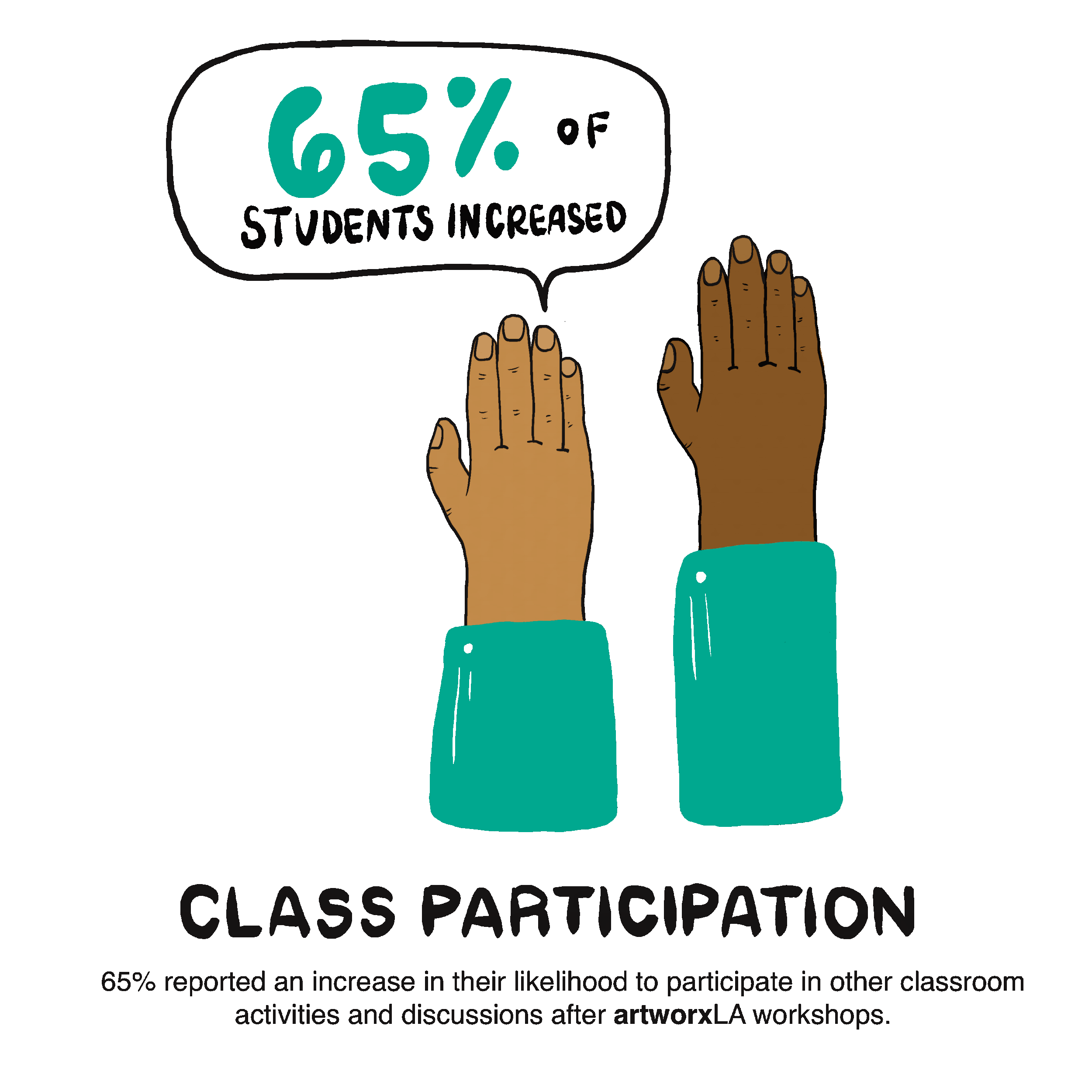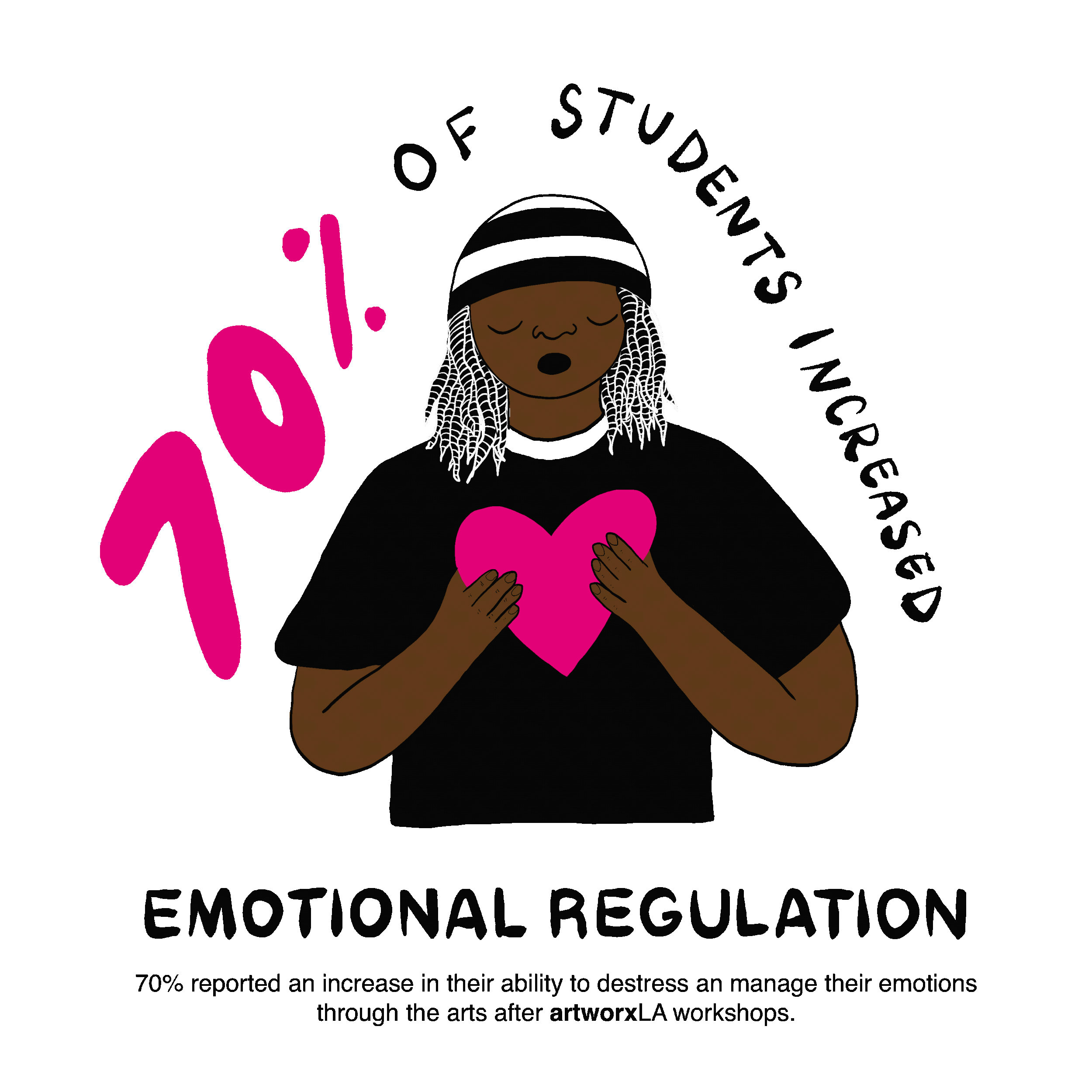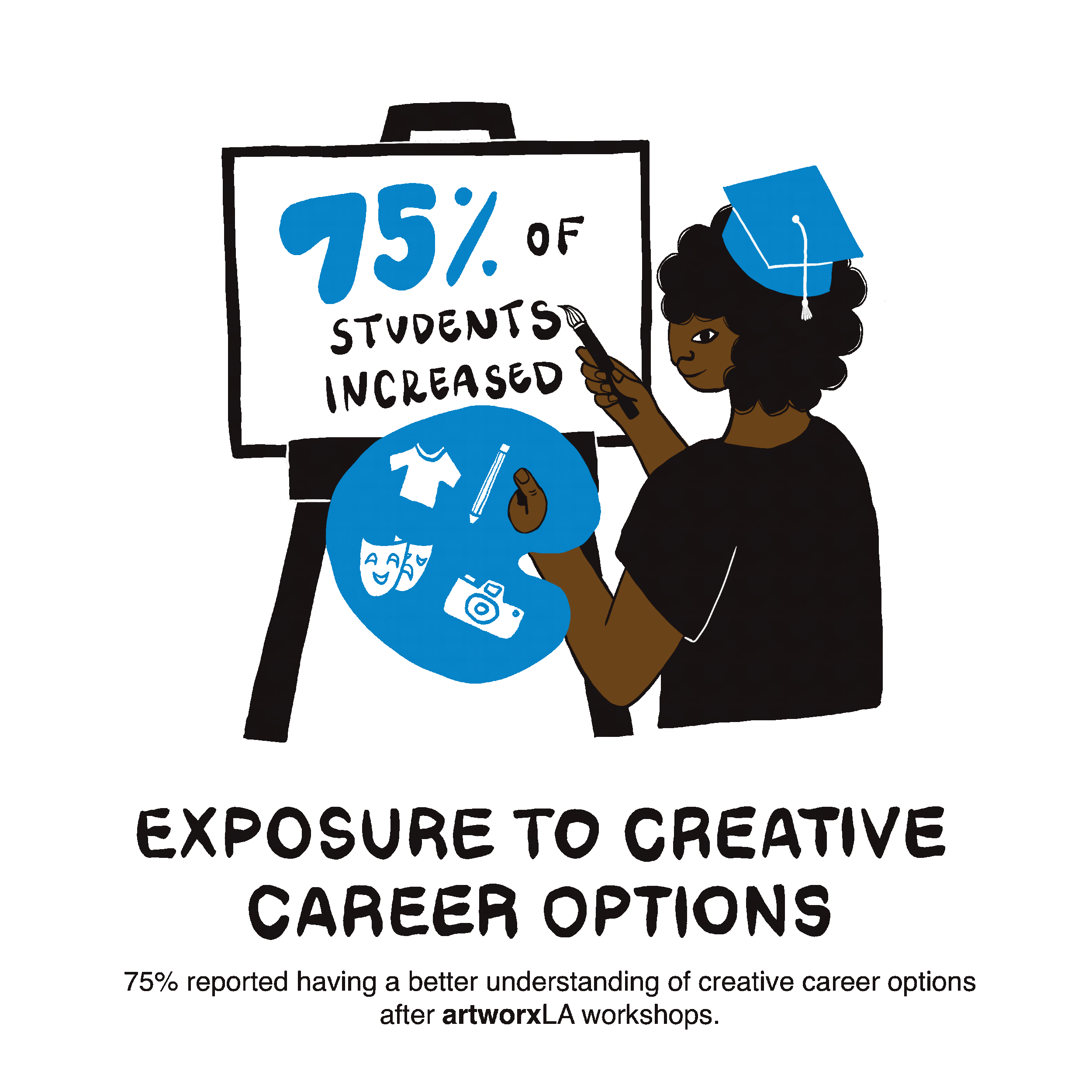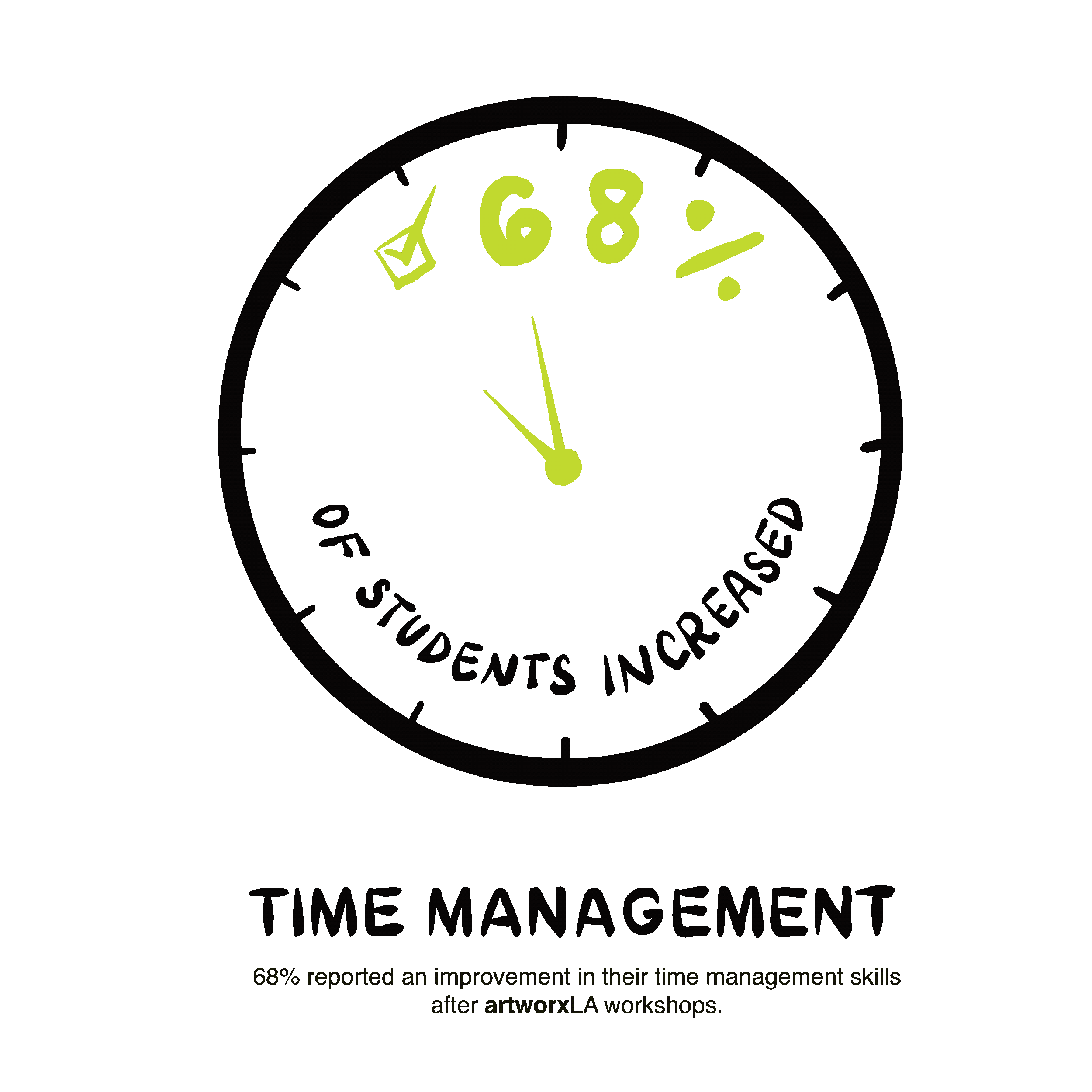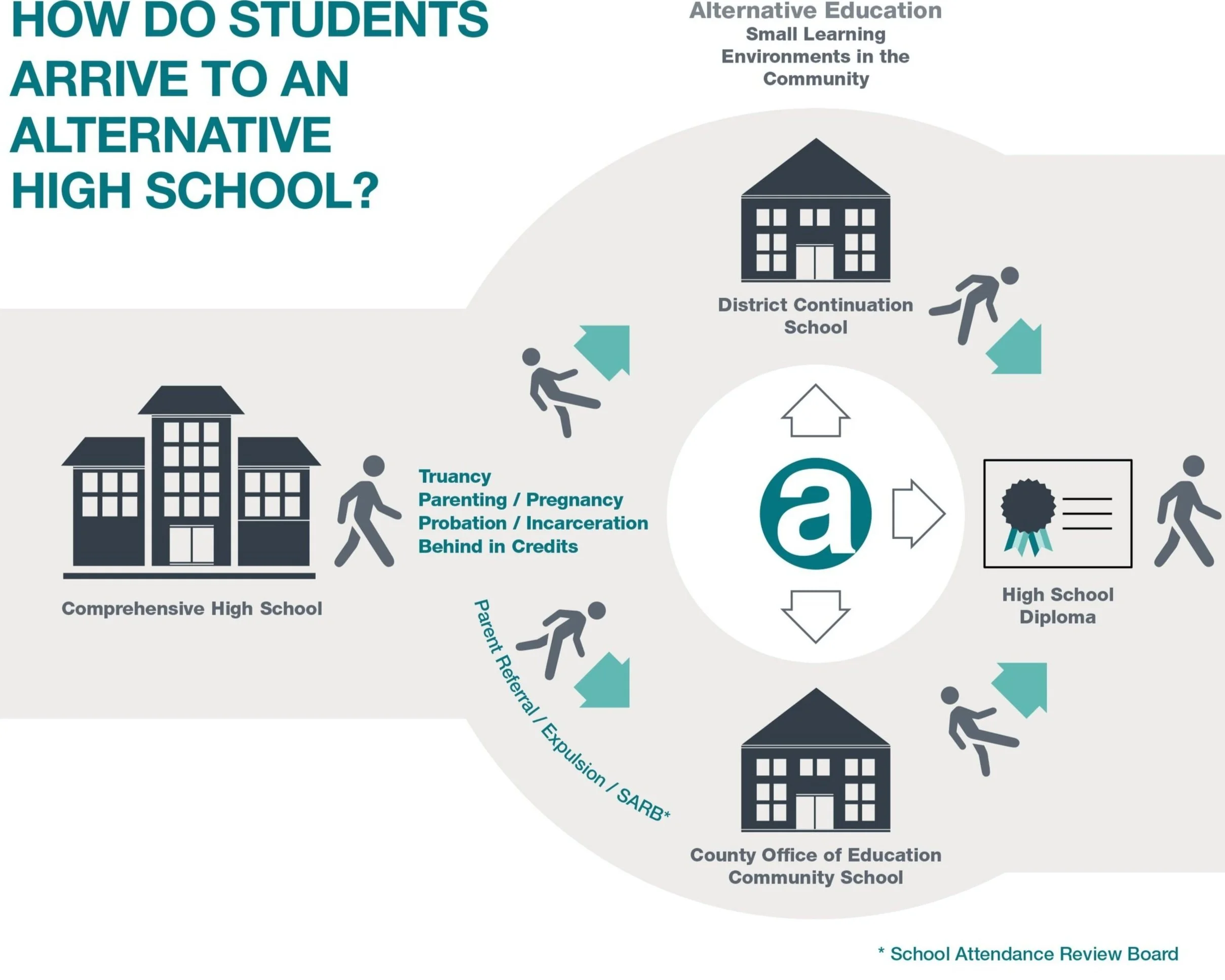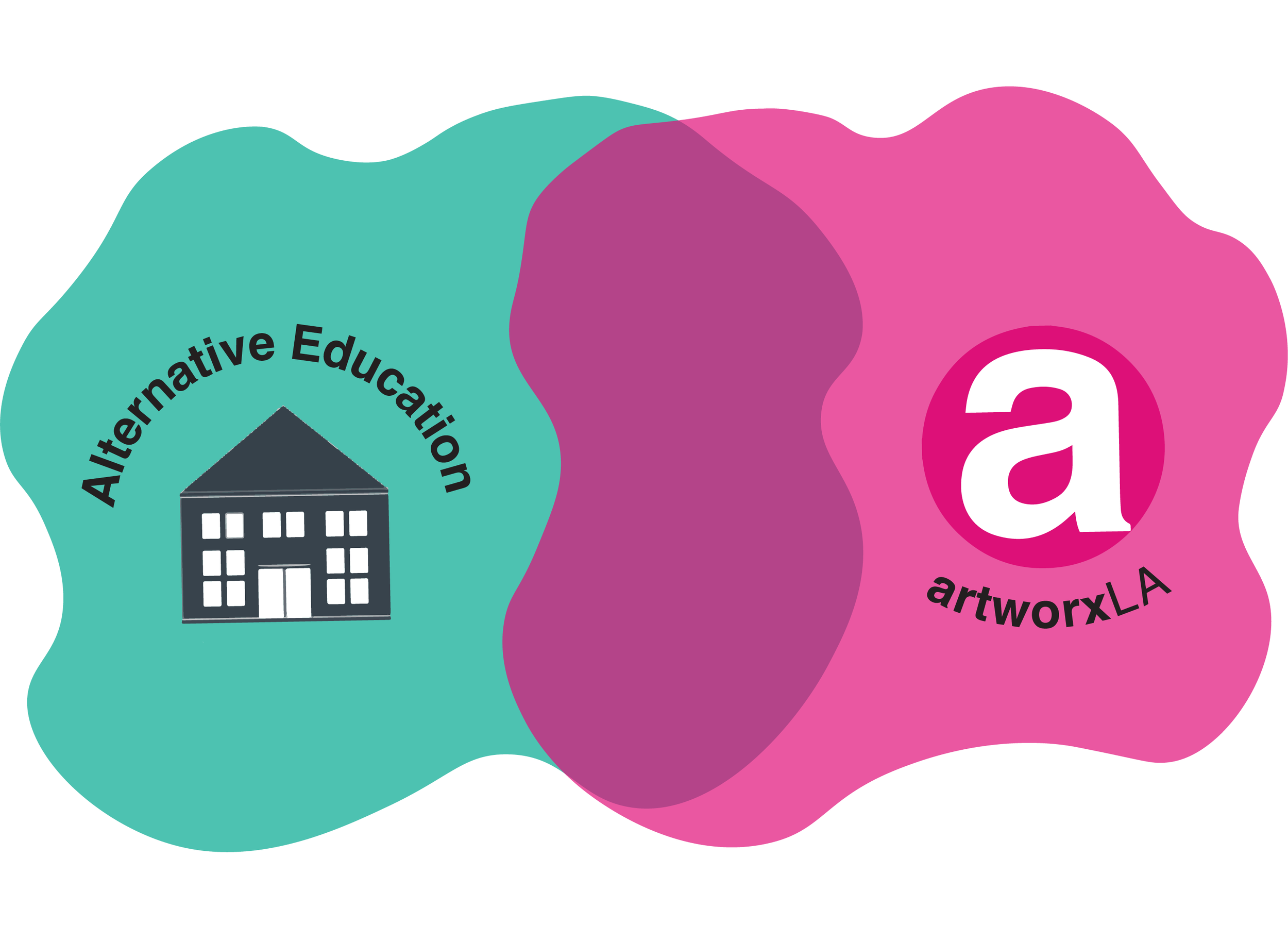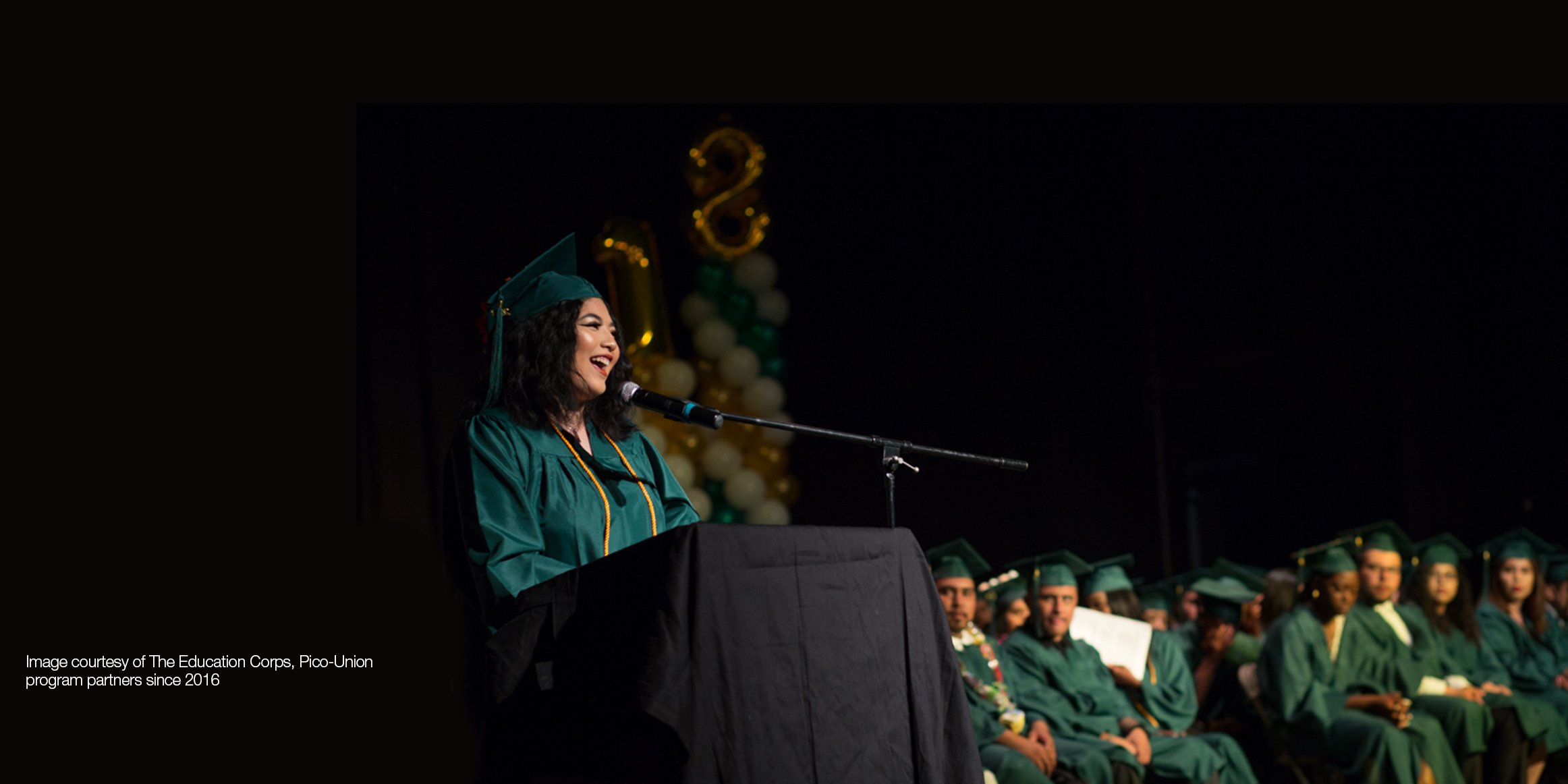
Our Impact
DID YOU KNOW?
1 out of every 4 students in the u.s. does not graduatE from high school with their class.
Sometimes, traditional comprehesive high school systems don’t work for nontraditional learners.
20,000 students drop out of high school every year in Los Angeles County. 83% of those students are African-American or Latino and come from households living below the poverty line. High school dropouts will earn $500,000 less over a lifetime than high school graduates and are 6 times more likely to be incarcerated. The negative effects of dropping out extend well beyond individuals and communities. Dropouts cost the state of California $1 billion in lost tax revenues and $1 billion in incarceration costs. While the socioeconomic dynamics are complex, when asked, dropouts cite lack of engagement as the leading factor that caused them to leave high school.
our response is that art works tO RE-ENGAGE YOUTH WITH THEIR EDUCATION.
WHAT HAPPENS WHEN STUDENTS MEET ARTWORXLA?
“Tasnim [artworxLA Teaching Artist] showed me the creativity that’s in my pocket, but also showed me how I can turn this into a career… I learned it’s okay to find what you’re good at and not constantly focused on what you’re not. I prefer to be behind the scenes instead of on camera—I’m way too shy for that. I’m also really organized and can keep my friends on track, which I learned is actually a job. Now I want to be an AD (first assistant director), and I had never even heard of that job before. It was fun to rotate between the different roles in production and post-production, and meeting professionals and seeing how my personality vibed with theirs. I can see this in my future.” —Student Ashley M.
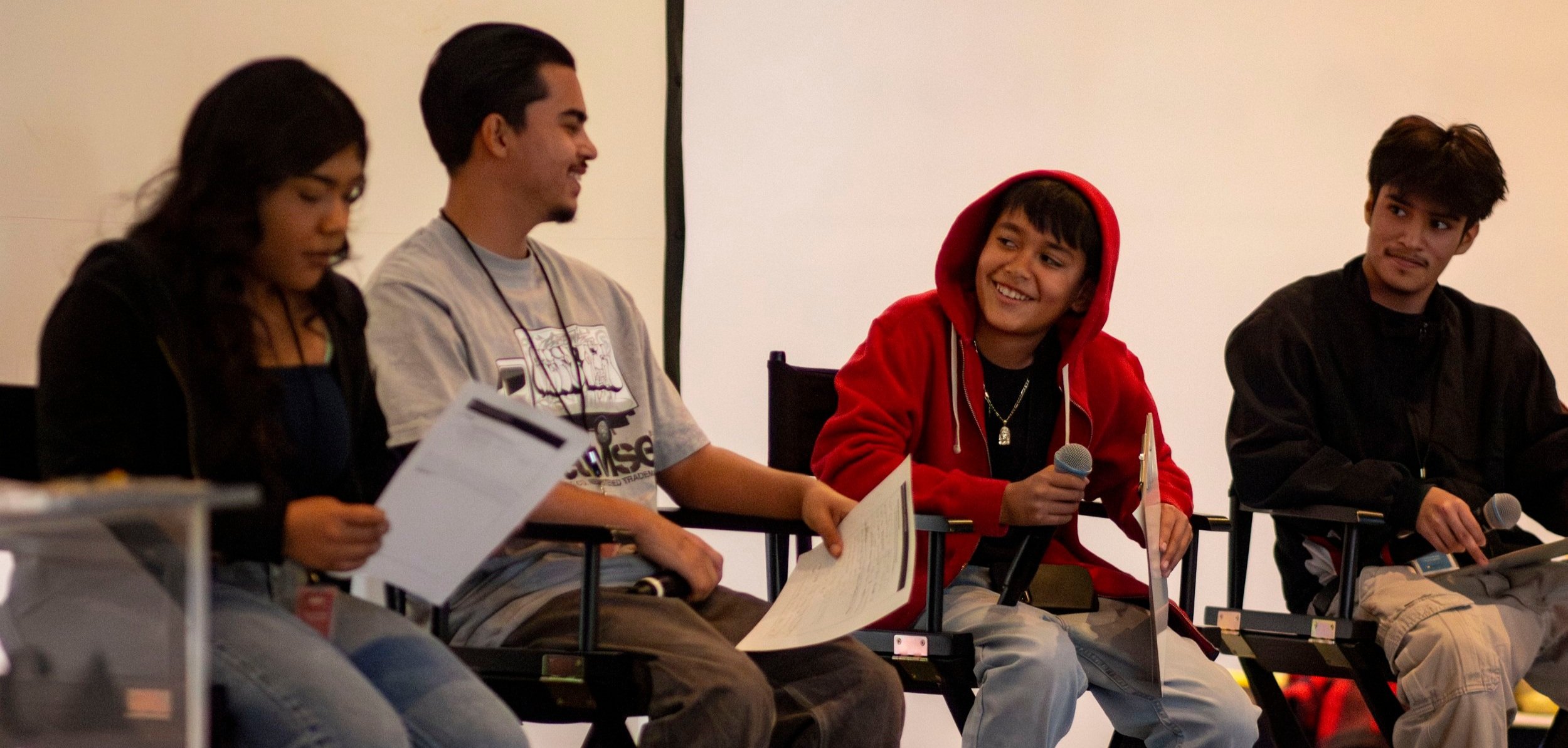
why alternative education?
Alternative education schools (i.e., District continuation schools, County Community Schools) are too often stigmatized as having a lack of rigor or characterized as a “last chance” before dropping out. Students are stigmatized for the challenges they might face—whether it is managing mental health conditions, substance use disorders, previous incarceration, being a primary caregiver or contributor to household income, or simply falling behind in grades/credits.
artworxLA sees the flexibility of alternative education and the powerful resilience of youth as assets to harness. Instead, this is a “second chance” for us to meet students where they are and help them reclaim their education through creativity.
Here are aspects of alternative education that work for students:
Credit recovery.
Students who have fallen behind (for reasons such as failing classes and/or chronic absenteeism) can catch up on credits. Students receive a customized work plan according to their academic needs and project-based learning approaches that encourage learning across subjects.
Small learning environments.
Usually with 50 students or less, classes are capped at 20–25 per teacher to allow for personalized attention, differentiated and individualized instruction.
Community-based support.
School sites are in diverse facilities, from traditional school buildings to storefronts, churches, and community centers throughout the city. Sharing communal space often fosters partnerships with community based organizations for supportive services and greater connections to students’ neighborhoods.
WHAT DO STUDENTS EXPERIENCE WHEN ALTERNATIVE EDUCATION AND ARTWORXLA ARE COMBINED?
-
Teaching that adapts to multiple learning styles, is student centered, and makes learning fun.
Hands-on interactive activities that encourage learning by doing.
Inquiry-based discussions that develop critical thinking skills and encourage multiple perspectives.
During workshops there are multiple opportunities for student voice and choice.
-
Workshops that connect to students’ lives by asking and learning about their experiences (cultural capital).
An invitation for students to bring all parts of themselves into the classroom, and learn and grow through self-discovery.
A space that values student perspectives on local, national, and global issues, especially centered on social justice.
-
Workshops that connect to students’ lives by asking and learning about their experiences (cultural capital).
An invitation for students to bring all parts of themselves into the classroom, and learn and grow through self-discovery.
A space that values student perspectives on local, national, and global issues, especially centered on social justice.
“I felt [artworxla] was really preparing me for the future. Also meeting with other students from different schools has been a rewarding experience.”

